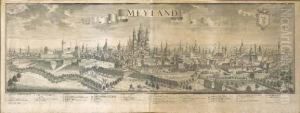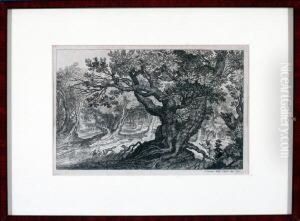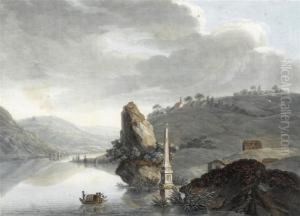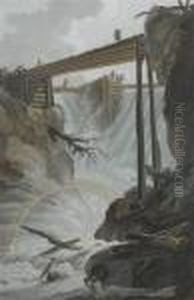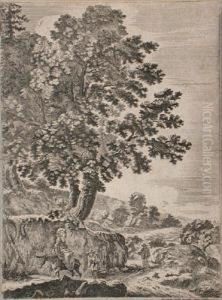Jeremias Wolff Paintings
Jeremias Wolff was a prominent figure in the European art scene of the late 17th and early 18th centuries, primarily recognized for his contributions to the world of engraving, publishing, and art dealership. Born in 1663, Wolff's early life is somewhat obscure, but he emerged as a significant figure in Augsburg, Germany, a city renowned for its artistic and commercial vitality during this period. His work and influence spanned several decades, during which he established himself and his business as central to the artistic and intellectual exchanges of his time.
Wolff was not just an artist but also an astute businessman. He founded and operated one of the most successful art and publishing houses of his era, Jeremias Wolff Erben Kunst- und Buchhandlung, which continued to flourish even after his death in 1724. His establishment became a hub for artists, engravers, and creators from across Europe, facilitating the production and distribution of a wide array of artworks, including engravings, maps, books, and prints. Wolff's keen eye for art and talent helped propel the careers of numerous artists, and his contributions to the publishing industry significantly impacted the dissemination of artistic and scholarly knowledge.
Beyond his role as a publisher and dealer, Wolff was also involved in the creation of art, particularly in the realm of engraving. He possessed a remarkable ability to capture the complexity and beauty of his subjects, contributing to the evolution of engraving techniques during the Baroque period. His work reflects the broader artistic and cultural shifts of his time, embodying the intricate details and grandeur characteristic of Baroque art.
Wolff's legacy is not only found in the pieces he created or the artists he supported but also in the way he transformed the art business in Europe. His innovative approach to publishing, combined with his commitment to promoting artistic talent, laid the groundwork for future generations of art dealers and publishers. Despite the passage of centuries, Jeremias Wolff's impact on the art world remains significant, with his prints and publications still highly valued by collectors and scholars alike.
Jeremias Wolff's death in 1724 marked the end of an era but also the beginning of a lasting legacy. His business continued to operate successfully, and his family and successors maintained the high standards he set, ensuring that his influence would persist through the ages. Wolff's life and work epitomize the vibrant intersection of art, commerce, and innovation, making him a pivotal figure in the history of European art and culture.
